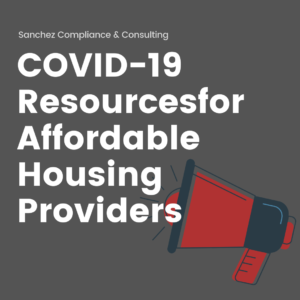COVID-19 swept through the nation and left many property managers in a bind – they still needed to pay their mortgages, but millions of Americans couldn’t pay their rent.
With federal and state governments scrambling to prevent mass evictions, multifamily properties have to adjust to this new reality by creating and providing the right HUD eviction notices.
What You Need to Know About COVID-19 HUD Eviction Notices
The coronavirus will impact the economy for a long time, and many multifamily properties will bear the burden of late and missed rent payments – that means changes to how you handle evictions.
Here’s how each level of government is approaching eviction proceedings for tenants who miss their rent payments:
- Federal: One of the first measures the federal government passed was the CARES Act, which included a temporary eviction moratorium on public and Section 8 housing. The moratorium is valid for 120 days, beginning on March 27, 2020.
- State: While states have to meet the federal guidelines, some are taking extended measures to protect tenants. Texas isn’t allowing eviction proceedings until May 18, 2020, and no writ of possessions can be issued until May 25, 2020.
- Local: Every city is taking different measures to protect tenants. In Austin, the city passed an ordinance that restricts multifamily properties from filing a “notice to vacate” until July 25, 2020. This gives tenants an additional 60 days to pay their rent.
If you manage multifamily properties across multiple jurisdictions, it’s important to clarify the affordable housing compliance standards for each location.
3 Types of HUD Eviction Notices You Need to Create for COVID-19
It can be easy to take a “wait and see” approach to update compliance standards, but you can be an industry leader in affordable housing by adopting HUD eviction notices that give tenants plenty of time to remedy their situation.
1. Notice of Late Payment
While you can’t evict anyone for late rent payments, you can still notify them that they are behind and let them know what their options are. You just can’t add any penalties or fees for the late payment.
2. Notice of Proposed Eviction
The city of Austin passed an ordinance that requires multifamily properties to provide a “notice of proposed eviction” which informs them that they have 60 days to catch up on their rent.
3. Notice to Vacate
Every city has different approaches to evictions during COVID-19. Some places are sticking exclusively with the federal guidelines, where others are beholden to their state’s regulations.
If you provided a “notice of proposed eviction”, the “notice to vacate” should come as no surprise to delinquent tenants. Check your city ordinances to clarify how long tenants have to pay their rent.
How HUD Eviction Notices Benefit Your Business
Managing property is challenging enough, but it becomes tedious when you need to track continuous changes to affordable housing compliance standards. HUD eviction notices help you track where you’re at in the process while offering some guidance to your tenants.
Need help crafting an affordable housing compliance policy? Contact the team at Sanchez Compliance & Consulting to find out how you can be an industry leader.


